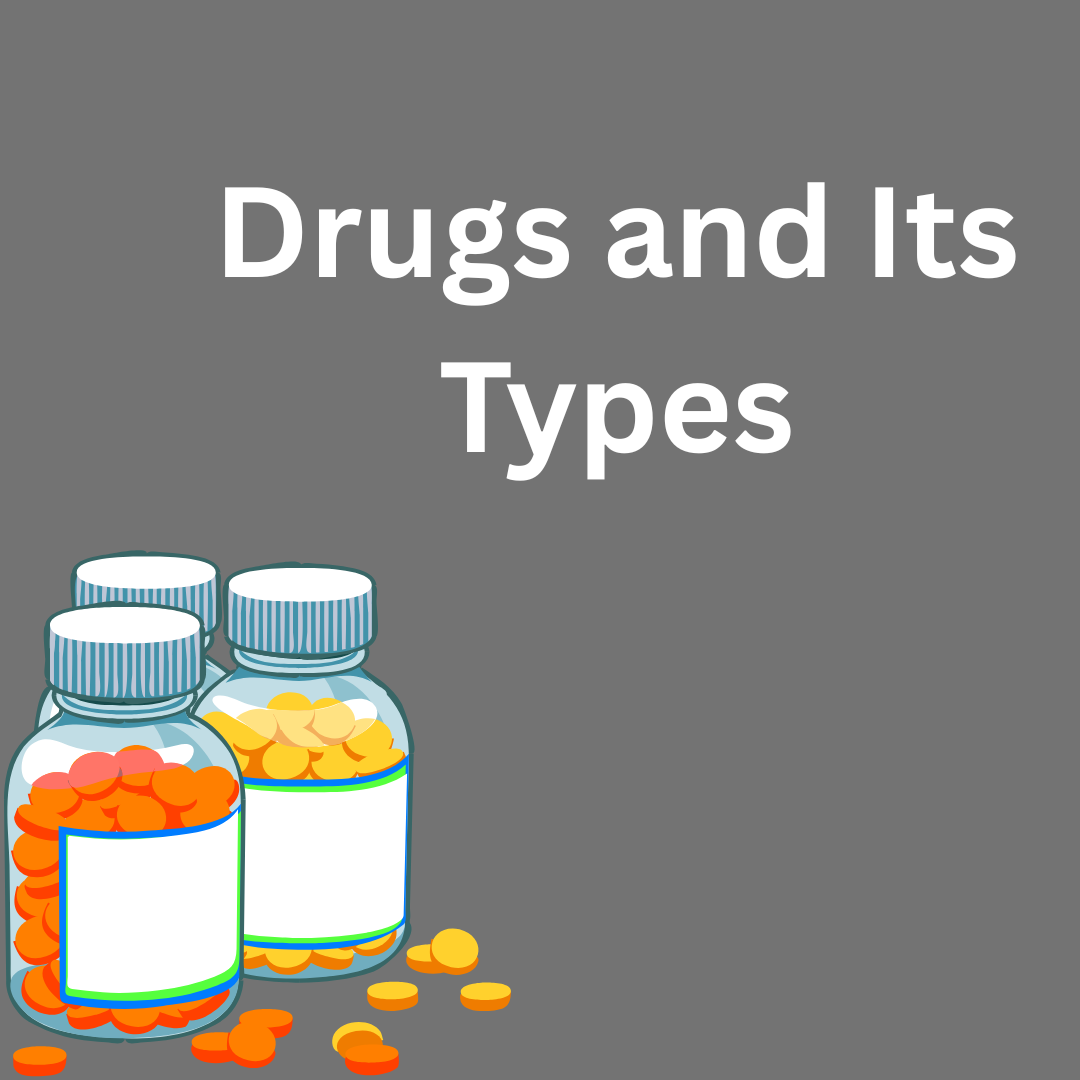What is a Drug?
A drug is a chemical substance that is used to treat abnormality in the body, provide relief from pain, and prevent it from further harm. Different types of substances cause different types of effects. Depending upon its effects, drugs are divided into 9 major categories:
Types of drugs:
The following are the major types of drugs:
- Hallucinogen
- Depressant
- Stimulant
- NSAIDs
- Anti-histamines
- Cannabinoids
- Opioid
Hallucinogens:
Hallucinogens are the medicines that make your thinking blur. By taking these medicines, a person becomes unaware of the reality. He saw and heard things that were not happening in real life or in his surroundings. These types of drugs are not addictive and are less dangerous than many other drugs.
Chemicals present in hallucinogens:
- Most of the alkaloids such as Indole, ergotamine, etc.
- Substituted phenethylamine
- Tryptamine psilocin
Depressants:
Depressants, as indicated by the name, depress or slow down the central nervous system. A class of drugs named barbiturates is also considered to be depressants. They are basically used to treat patients with great nervous impulsions, e.g., patients with depression and anxiety. These types of medicines often used as tranquillizers, etc.
Chemicals present in depressants:
- Alcohols
- GABA
- etc.
NSAIDs:
Non-steroidal anti-inflammatory drugs (NSAIDs) are the types of drugs that are used to relieve pain, lower the body temperature, and lessen inflammation. They work against prostaglandin hormones. These types of medicines are also used against cyclooxygenase enzymes.
Chemicals present in NSAIDs:
- Propanoic acid
- Salicylates
- Anthranilic acid
- Selective COX-2 inhibitors
Stimulants:
Stimulants, as the name indicates, are those drugs that stimulate the autonomic nervous system. Dopamine and adrenaline are the main stimulants. If they are released naturally in your body, they cause fruitful impacts on our body, and if they were taken as pills, the impacts were very impressive, but the result was eventually very drastic and destructive.
Chemicals present in stimulants:
- Amphetamine
- Caffeine
- Methamphetamine (one of the world’s most dangerous chemicals)
Antihistamines:
The medicines that cope with the allergic reactions caused by the body are called antihistamines. These medicines are prescribed and were given during conditions like runny nose, digestive issues, etc. These medicines also work against the body’s immune system and suppress the immune system to prevent further damage.
Chemicals present in antihistamines:
- Alkylamines
- Ethanolamine
- Piperazines
- Piperidines
Cannabinoids & Opioids:
All the forms of chemical compounds that are found in the cannabis plant. These compounds are usually non-psychoactive drugs (meaning they cause therapeutic effects without causing any unconsciousness or any hallucination, etc.). These chemicals were used to treat cancer and other gastrointestinal diseases, etc.
Chemicals that are present in cannabinoids:
- Tetrahydrocannabinol
- delta-9-tetrahydrocannabinol (THC)
- cannabidiol (CBD)
Opioids:
These types are the strongest painkillers. These medicines can be both prescribed and illegal drugs. These types of drugs are the world’s most dangerous drugs. E.g., heroin
Chemicals that are present in opioids:
- levorphanol
- butorphanol
- pentazocine
- pethidine
Conclusions :
The types of drugs are very versatile, and each drug has a long-lasting effect and also side effects. This website is all about medicines and their chemical formulas, structures, modes of action, and pharmaceutical markets. There has been a vast discussion in the coming blog.


Good https://lc.cx/xjXBQT
Awesome https://lc.cx/xjXBQT
which part of my blog you like the most
Awesome https://t.ly/tndaA
Awesome https://t.ly/tndaA
Very good https://t.ly/tndaA
Good https://urlr.me/zH3wE5
Awesome https://rb.gy/4gq2o4
Good https://rb.gy/4gq2o4
Very good https://rb.gy/4gq2o4
Good https://rb.gy/4gq2o4
Very good https://rb.gy/4gq2o4
Good https://rb.gy/4gq2o4
Good https://rb.gy/4gq2o4
Good https://is.gd/N1ikS2
Awesome https://is.gd/N1ikS2
Awesome https://is.gd/N1ikS2
Awesome https://is.gd/N1ikS2
Very good https://is.gd/N1ikS2
Awesome https://is.gd/N1ikS2
Very good https://is.gd/N1ikS2
Awesome https://is.gd/N1ikS2
Awesome https://is.gd/N1ikS2
Very good https://is.gd/N1ikS2
Awesome https://is.gd/N1ikS2
Awesome https://is.gd/N1ikS2